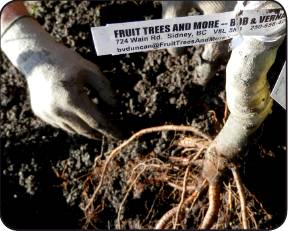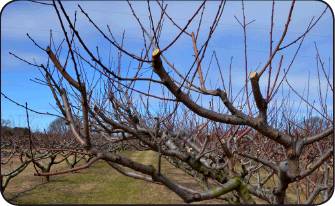Happy New Year, to all of the Hobbs News-Sun readers and gardening public, it’s already two weeks into the new year as I write this article. I am ready for the new season and the great things we all can do and achieve in 2019. The winter solstice has happened and days are lengthening with added daylight time which increases every day, that’s good news for the gardeners and any of us who enjoy the great outdoors.
We are 13-weeks away from central Lea County’s last frost date, or 91 days out for the green or brown-thumbers to enjoy planting and working the soils in our various gardening efforts. Although January is not a dead month for the gardeners. There is always something to be doing in the garden, whether it is pruning, tidying-up, planting and sowing.
It is a little early to sow seed outdoors on a lot of plants we like to grow. I want to go a little deeper into this thought, how about the things you have sown in your mind, the dreams and the aspirations and desires we all have within us. Let’s pull the package seeds out, plant them and let the living water of life grow those things up in 2019. It is a new faith season and a new gardening season for all of us.
So, I have put together some top gardening tips for January, get out and garden and grow.
General Landscape

You can prune wisteria and trumpet vines now, cutting back to main stems with side shoots with two or three buds. These plants are very hardy in Lea County and tend to overpower where they are planted so be aggressive in your pruning of these vines and train these heavy vines onto a strong support system.

Rose bushes can be pruned now while dormant. If overgrown, I prefer to remove the top half now and wait until late February into March and trim up the bottom half. Our extreme weather conditions, dryness and winds can freeze buds if cut too short now, waiting until early spring warm-up will show buds that green and alive to complete the rose pruning.
Remember, climbing roses are to be pruned after flowering in the spring, not in the winter as other roses. You may train climbing roses now by weaving the long canes through openings in trellises or arbors and then tying the canes with jute twine or plastic vine tie. Securing canes now prevents damage from Lea County’s spring winds.
All types of bare-rooted plants can be planted now. Dig proper planting holes, spread roots out, backfill with soil and water. Keep evenly moist to stimulate the root structures to grow underground and get established. Do not fertilize newly planted trees or shrubs until they have started growth in the spring and then a very light application of fertilizer.

You can trim up ornamental grasses that are looking ragged with the winds. Do not cut ornamental grasses into squares or round balls, this practice will kill off your ornamental grasses. Trim 4-6 inches above the internal growth crown. My personal preference on native grasses to remove the ragged seed stalks, shape a little and leave the base clump as insulation over the growth crown until spring.
Flowering perennials in landscape beds can be cut and pruned to a few inches above the soil, or higher if some plants are still showing green. Perennial plants are dormant now and you can move plants with soil ball around the roots to a new location, replant and water.
Trees and shrubs that are dormant can be dug up and moved in this season if these plants are overcrowding other plants and space is needed. This is a great time for gardeners to share plants with others. Find the wayward seedlings and saplings new homes to go to a new spot in your landscape.
Vegetable Gardens
Design and lay-out an in-ground garden or maybe a raised-bed garden area. Now is the time to begin preparations for the coming spring planting season. For the existing in-ground vegetable garden add compost and organic matter dig in or rototill the amendments into your soil.
Raised beds, decide on your design, construct and fill beds with raised bed planting mixes. Do not use native soils in your raised bed mixes as you will be introducing nematodes, other soil borne pests and bacteria that will attack your vegetables.
For gardeners who like to grow their own potatoes it’s time to start chitting (sprouting) your potatoes. To do this you stand them on end in a tray or egg carton box and place them in a bright frost free area. Light will stimulate the eyes (buds) hidden within the skin of the potatoes.
Area garden centers have displays of vegetable seeds set-up now. This is a good time to browse through the many varieties of vegetables and select the types of veggies you love to eat and want to grow. Seed catalogs have arrived in my mail boxes within the last three weeks from supplier’s sources across the country, order earlier as favorites will disappear quickly from mail-order sources. On cold wintry days, spend some time reading these catalogs dreaming about your ideal garden would be this spring. Time spent now on planning will translate into gardening success, come spring planting time.
Consider dedicating a bed for perennial vegetables such as asparagus, rhubarb and artichokes. These veggies will grow in Lea County soils and do great. A perennial bed of these vegetables needs to be developed now. Crowns and tubers of these plants are beginning to show up in local garden center sources and in the garden seed catalogs. There is a short window of bare root availability to the gardeners. I will add a comment here, I personally use the rhubarb and artichokes in my home landscape for color and uniqueness as accent plants and the added benefit of a vegetable I grew up eating.
In the fruit garden

Fruit trees are fully dormant and pruning of peaches, cherries, apricots, plums, apples and pears can be done now. Planting of fruit either bare root or in containers can also be done at this time, again look at varieties for USDA Zone 7 which covers Lea County. Be sure to water often once planted.
Blackberry and raspberry bushes can be purchased through local and nursery market sources as bare root or containerized plants. They can be planted now and keep watered and plants mulched in our local dry conditions.
Pecan tree pruning can be done now. Look for weak branch crotches, wind damaged broken branches that could be a safety hazard and dead wood. Hold off on fertilizing pecans now, wait till spring prior to bud break with granular applications of fertilizer. A very common problem with pecan nuts that I see and get phone calls on in late fall to winter is the nuts are not totally filled out in the shell. Generally, this is a nutrient (fertilizer) deficiency which is a problem related to the lack of zinc which works on the green nuts filling out within the shell. This trace element needs to be applied in the spring, post this to your calendar as a reminder…I will review this in my March gardening article.
Other jobs in the garden
On warm and sunny days get outside and water manually with a hose. If you have an automatic irrigation system turn it on, apply water to turf, trees shrubs and landscaped beds. Apply at least an inch of water every 10 days or so. You want a hydrated soil not bone dry. Everyday watering for the winter season is waste of water and cost you money in the long run.
Keep bird feeders clean, fresh and topped off with feed. Keep a water source close and change water often when nasty.
Clean up the patio, outdoor living areas, and porches by removing dead frozen plants in colorful pots, hanging baskets and other containers. Pull out dead plants and soil, wash and scrub pots getting ready for the coming spring
From your recliner or kitchen table
Order your trees, shrubs, and garden seeds now. Have a garden plan drawn up to help decide the number or quantities you need.
Plan your vegetable plot for this year to ensure a good crop rotation and prevent pests and diseases building up in the soil.
Design and plan for new hardscaped items into your home landscape such as concrete work, a redo of outdated landscape areas, a patio, entertainment area and so much more to dream about.
PHOTOS SUBMITTED BY DAVID HOOTEN
GRAPHICS BY CINDY BENTLE















